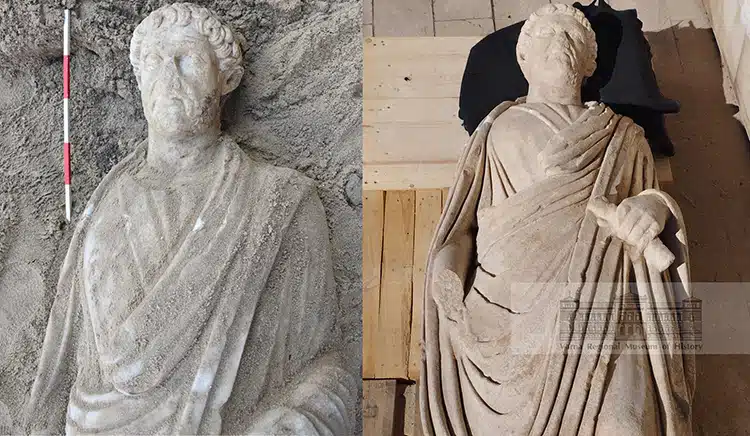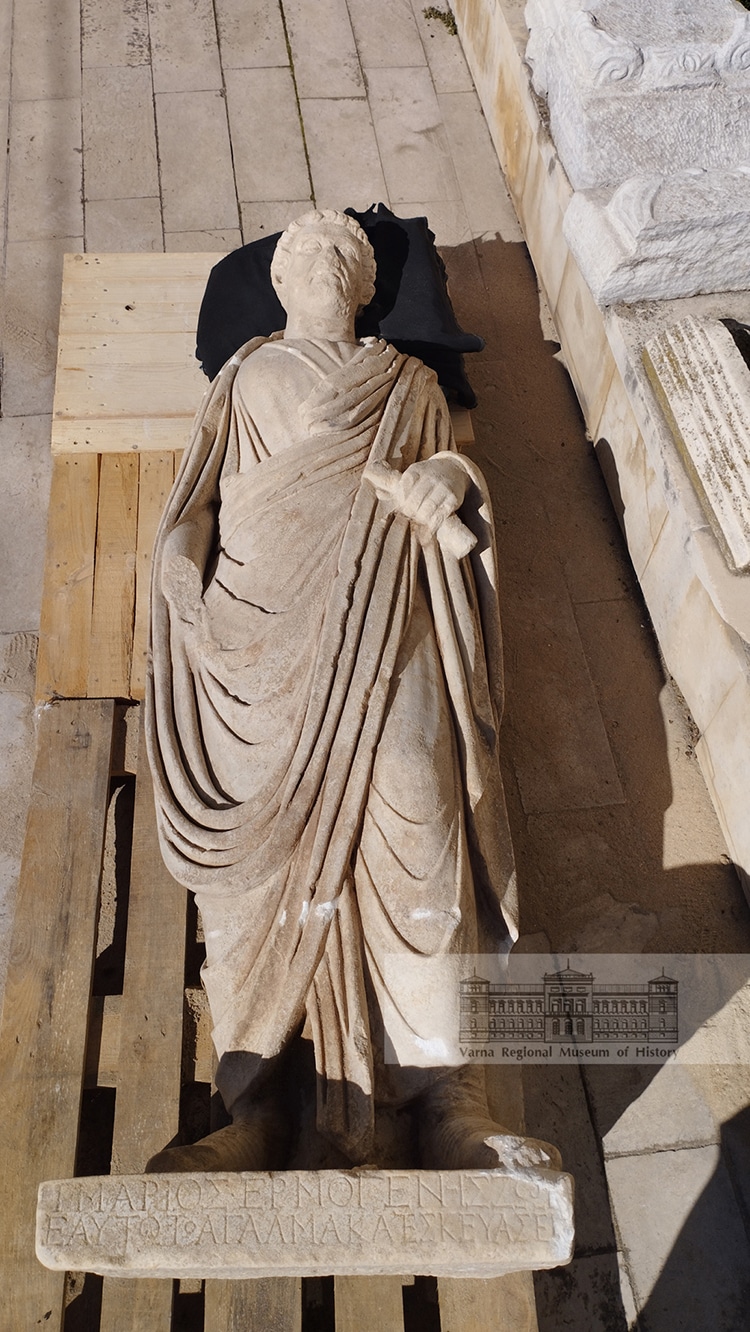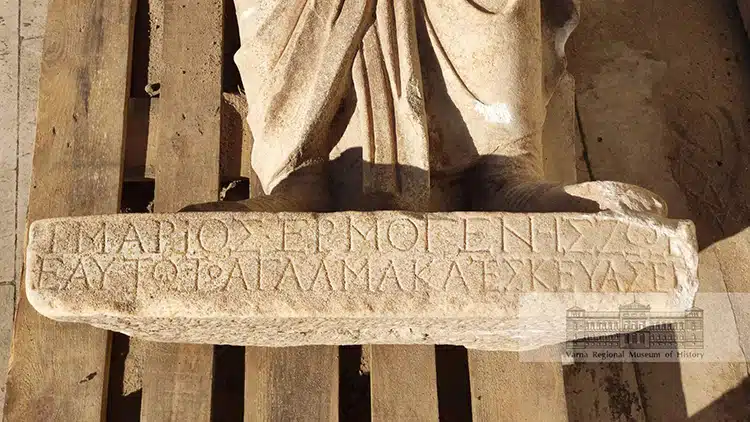The statue of Gaius Marius Hermogenes.
Many people choose their tombstone, while others leave the decision to family after they are gone.
This monumental dilemma is an ancient one.

The statue of Gaius Marius Hermogenes. (Photo:Varna Regional Museum of History)
The statue was unearthed in Varna, Bulgaria, during a survey of a construction site.
It is slightly larger than life, carved from white marble.
Researchers believe it was carved in the late second or early third century CE.

Photo:Varna Regional Museum of History
Shockingly intact for its age, only its right arm and nose have been lost to time.
The figure wears a draped toga and clutches a scroll.
He sports short curls carved with distinct realism.

Photo:Varna Regional Museum of History
His sandaled feet rest on a plinth.
The front of the plinth is inscribed with a phrase in Greek.
Despite being a Roman city, Odessos continued to use the Greek language.

Photo:Varna Regional Museum of History
The inscription reads, Gaius Marius Hermogenes set up this statue for himself in his lifetime.
Gaius was likely a prominent local citizen from this outpost of empire.
Planning for his own death, Gaius managed to leave a memory which resounded almost 2,000 years later.
The statue will be cleaned and conserved at the Archaeological Museum of Varna.
This rarity will soon be on exhibit for all to see at the Archaeological Museum of Varna.